
Paving a sidewalk, patio or driveway involves many questions. Including the selection of the pattern. The following overview shows which paving patterns are possible and how they differ.
In a nutshell
- numerous patterns from simple to complex possible
- Pattern plays a role in resilience
- Consider the arrangement of the stones when calculating the requirements
- Stone cutting may be required
- correct approach throughout
Table of contents
- Carry out the laying pattern correctly
- Block and parquet bond
- cross joint bond
- herringbone bandage
- diagonal bond
- Runner association and row association
- elbow bandage
- center stone bandage
- segment arch bandage
- scale arch bandage
- frequently asked Questions
Carry out the laying pattern correctly
For an accurately laid paving pattern, it is crucial to consider a few points. These include, among others:
- Observe the resilience of the laying pattern
- Measure the first row continuously
- use appropriate tools
- carry out regular checks
- comprehensive planning and preparation of a sketch
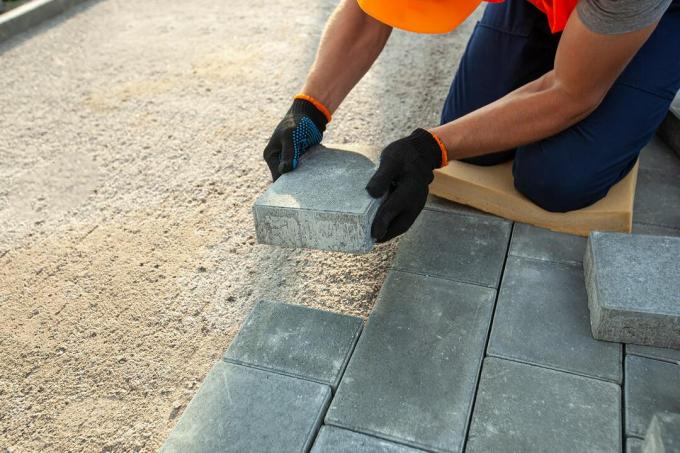
Tip: Above all, measuring and checking is often neglected. As a result, errors creep in that are visually disturbing, can have a negative effect on the strength and require considerable effort to correct. It is therefore better, especially if more than one person is working at the same time, to constantly check the rows. Deviations are thus noticed early on.
Block and parquet bond

The block bond or parquet bond when paving as a laying pattern can be achieved with all rectangular, oblong stones. The stones are joined together in blocks of one to three elements. The next block is aligned at 90 degrees to it.
- easy to lay and therefore suitable for beginners
- wide range of different options
- well suited for multicolored compositions
- ideal for terraces and sidewalks
- medium firmness
- only possible with straight runs
cross joint bond
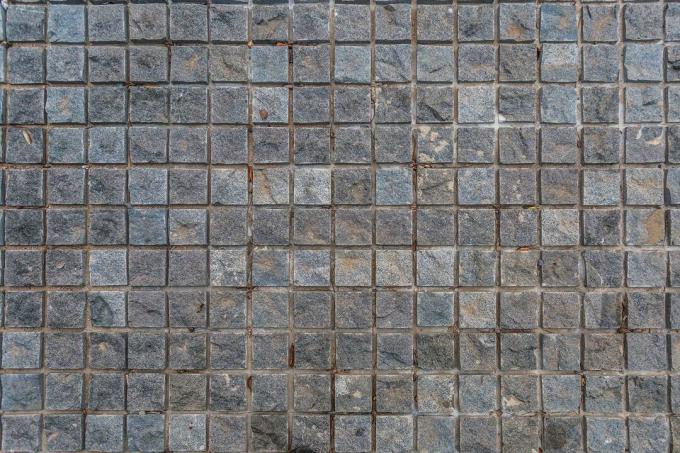
In this paving pattern, the square or rectangular stones are aligned exactly parallel to each other. As a result, the joints between them each form crosses. This gives a very clear, calm and elegant picture.
- accurate measurement and alignment required
- low strength and resilience
- good for sidewalks
- can be achieved with all equal and regular stone shapes
- simple pattern and suitable for beginners
herringbone bandage

In the herringbone pattern, rectangular, oblong pavers are oriented at a 45-degree angle to the edge. In the second row, the overhangs are used as contact surfaces. This results in the "fishbone", which looks particularly complex and has numerous advantages.
- well suited for multicolored patterns
- ideal for inclines or declines
- high strength, therefore suitable for driveways
- can be used in bends
- depending on stone dimensions, time-consuming to lay
diagonal bond

The diagonal bond is a combination of the herringbone bond and the row bond. The stones are aligned diagonally to the edge, but do not run like a fishbone. The distances between row lengths can vary, allowing great creative freedom.
- high strength
- suitable for driveways
- possible with rectangular stones
- easy to lay with sufficient planning
- is useful on inclines
Runner association and row association
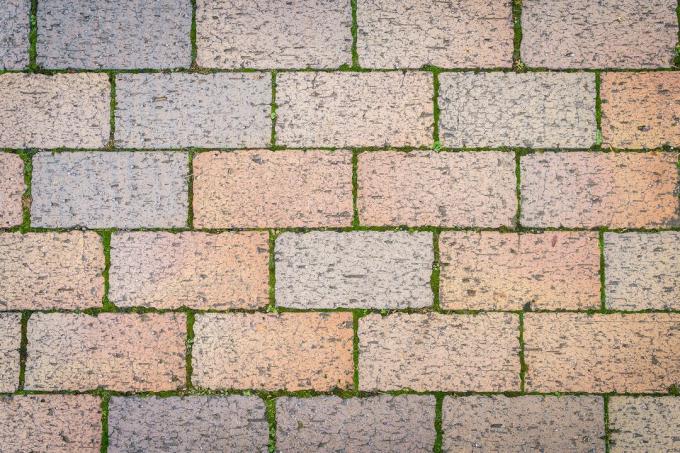
One of the simplest laying patterns for paving is the so-called stretcher bond. It is the most common and one of the most classic patterns. The stones are laid out in straight lines and staggered in rows.
- easy tracing of the pattern
- calm effect
- suitable for patterns with different stone colors
- Resilience sufficient for driveways
- suitable for a variety of areas
- accurate measurement required
A notice: The series association is again differentiated into the trailing association and the central running association. In the central variant, the stones are offset by exactly half a length. In the sluggish execution by a third to a quarter.
elbow bandage
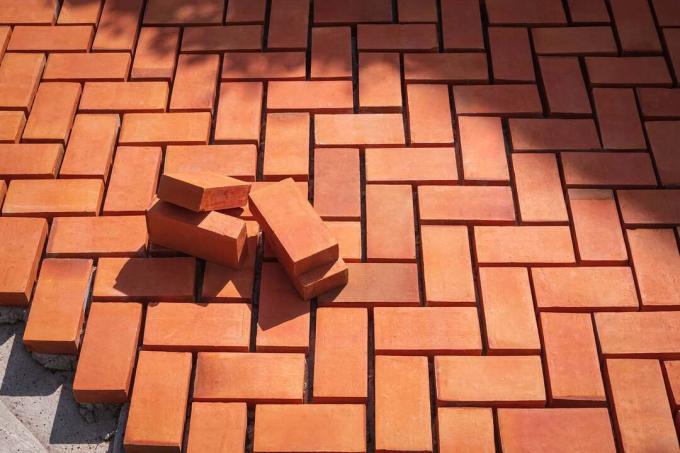
With the elbow bandage, the stones are aligned at a 90-degree angle to each other. They result in the shape of an L or an elbow.
- good strength, therefore also suitable for driveways
- decorative and unusual optics
- Variations with different colors possible
- comparatively complex to install
- Only suitable for straight paths and areas
center stone bandage

In the middle stone bond, a central and usually square middle stone is laid and surrounded by other rectangular, triangular or L-shaped stones. The result is an unusual, noble and complex look.
- ideal for terraces and sidewalks
- multicolored patterns possible
- difficult to install
- only suitable for straight gradients
- stands out visually
Tip: The center stone is mainly for sidewalks and terraces a good choice that should be illuminated from below by spotlights. The central stones on the edge can be replaced by lamps.
segment arch bandage
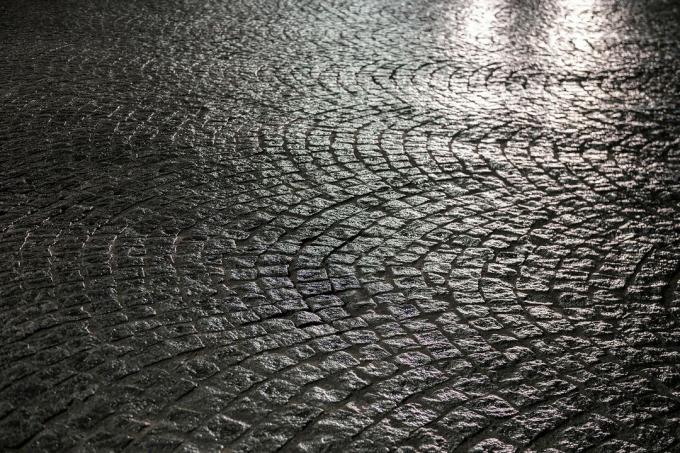
In the segmental arch bond, square stones are laid in such a way that they form arches that become larger. These can merge into one another, form a circle or follow the sweeping and curved course of a path. The paving pattern is well known from old squares and historic alleys.
- comparatively easy to set up
- creates a nostalgic, romantic look
- ideal for different colored patterns
- given good strength depending on offset
- ideal for illuminated paths and areas
scale arch bandage

A further development of the segment arch association are the scale arches. In these circle segments are laid, which together result in the pattern of fish scales. Again, square stones are used.
- rustic look
- very difficult to install
- good load capacity
- versatile
frequently asked Questions
With a very low load, sand or crushed sand alone can be sufficient. With heavier use, for example on driveways, a layered pavement bed made of gravel and sand is recommended.
No, there are also half bricks as well as triangular or pentagonal variants that can be found on the market. It is important that these fit in size, material and color. If you want to be particularly creative, you should therefore select an appropriate stone series or have to cut the individual elements.
Very complex patterns can already pose a challenge for laypersons when calculating the requirements. If there are also inclines or declines and a curved route, the installation is demanding and time-consuming. In these cases, it is advisable to have the installation carried out by a professional. This prevents mistakes and shortens the time for paving significantly.
Avoiding mistakes while laying patterns when paving is easier if you have a sketch to guide you. It will also be easier to imitate the pattern once the first row is complete. From this point on, it often makes sense to work in pairs.
